Semi-submersible transport vessels
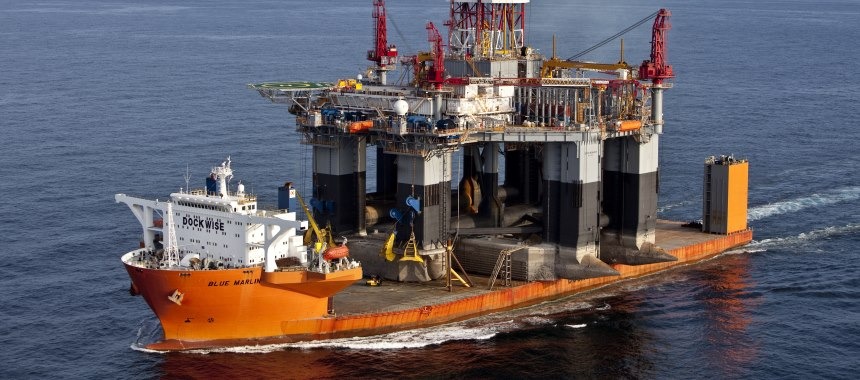
It all started with non-self-propelled barges, but now incredibly large loads can be loaded on board and sent to any destination in the world under their own power.
In 1998, the German company «Dockwise Shipping» became an organization specializing in the transportation of oversized and super-heavy cargoes. The company's assistants were large ships that transported cargoes worth millions of dollars. For oversized cargoes, the corporation had specialized ocean vessels such as «Mighty Servant1» and «Mighty Servant3», for yacht transportation «Super Servant3», «Super Servant4», and «Yacht Express», as well as other equally complex tasks carried out by transport vessels such as «Blue Marlin», «Black Marlin», «Transshelf», «Transporter», and others.
These maritime vessels have a narrow specialization. Semi-submersible transport vessels are designed for the transportation of oversized, extremely heavy cargoes, such as sections of offshore platforms and oil rigs, submarines, cranes, ships, docks, and the like. Importantly, the loading and unloading of cargo are carried out independently, without the need for additional cranes.
Semi-submersible transport vessels are of the FLO/FLO type (Float-on/Float-off). What does this mean? When it is necessary to load an oversized cargo onto the transport vessel, the ballast tanks are first filled with seawater through 16 ballast compartments, and the vessel is submerged to a depth of up to 26 meters. This process takes approximately 12 hours, during which up to 77,000 tons of water are pumped into the tanks. Once the marine vessel stabilizes, the loading process begins. Loading is a highly responsible task that requires specialized knowledge, careful planning, utmost attention, and teamwork coordination, and it can involve significant time investment.
With the help of tugboats, the cargo is pushed and held above the deck level until the semi-submersible transport vessel rises to its normal position. Then, a team of welders secures the cargo to the metal deck, and the placement of the cargo is inspected by divers. Subsequently, the water is slowly pumped out, and the transport vessel takes on the super-heavy load. Hence, the name of this type of vessel, which translates as «lift.»
The semi-submersible transport vessel is constructed from robust materials and has a highly durable hull, allowing it to undertake oceanic voyages. The vessel is equipped with a sports and entertainment complex for the crew, including saunas, a swimming pool, a gym, and more. The transport vessels have already completed numerous transportation missions, and each of them is unique in its own way.
The semi-submersible transport vessel Blue Marlin
Arguably, the most popular among all the transport vessels of «Dockwise Shipping» is the semi-submersible vessel «Blue Marlin,» built in 2000. The vessel gained recognition through the transportation of the damaged destroyer «USS Cole» (DDG-67) to its homeport in the United States in 2004, following a terrorist attack on the warship. When the leadership of the U.S. Navy decided to hire a specialized vessel for the delivery of the ship, its dimensions had to be slightly increased. The modifications were carried out at the Hyundai Mipo Dockyard in South Korea.
Let's evaluate the capabilities of the semi-submersible vessel «Blue Marlin.» It is capable of transporting 22 barges with a total weight of 60,000 tons from South Korea to the port of Rotterdam:
Technical specifications of the semi-submersible transport vessel Blue Marlin:
- Deadweight tonnage — 76 061 tons
- Length — 224.8 m
- Width — 63 m
- Draft — 10.2 m
- Cargo deck size — 178.2 m to 63 m
- Maximum immersion depth — 13.3 m
- Propulsion system — Wartsila, power 17 190 horsepower
- Speed — 13 knots
- Range — 25 000 nmi
- Crew — 55 people
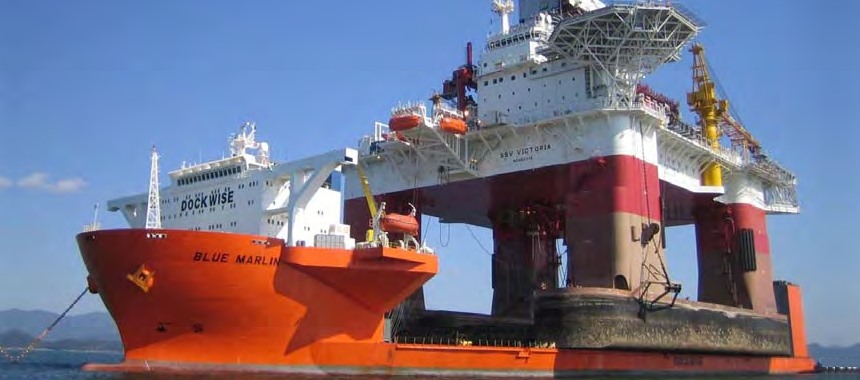 Semi-submersible transport vessel Blue Marlin
Semi-submersible transport vessel Blue Marlin
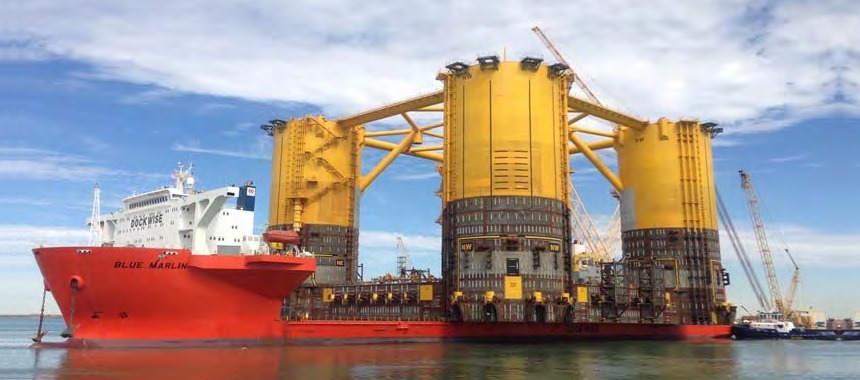 Transport vessel Blue Marlin
Transport vessel Blue Marlin
Semi-submersible transport vessel Black Marlin
Another prominent representative of the semi-submersible vessel series is the transport vessel Black Marlin. It is a powerful cargo ship that stands out from other vessels. The transport vessel Black Marlin possesses exceptional lifting capacity for handling truly enormous loads. In 2005, this semi-submersible transport vessel carried an oil refinery with its construction site. The transportation of such a platform posed a highly challenging task for the captain and the crew, but they successfully accomplished it.
Every cargo transported on such vessels is insured. After conducting tests and inspections, the customer is issued a special certificate, and only after that does the company's agent request permission for shipment.
Technical specifications of the semi-submersible transport vessel Black Marlin:
- Deadweight tonnage — 57 021 tons
- Length — 217.5 m
- Width — 42 m
- Draft — 10.08 m
- Cargo deck size — 165.6 m to 42 m
- Maximum immersion depth — 13.3 m
- Speed — 14.5 knots
 Semi-submersible transport vessel Black Marlin
Semi-submersible transport vessel Black Marlin
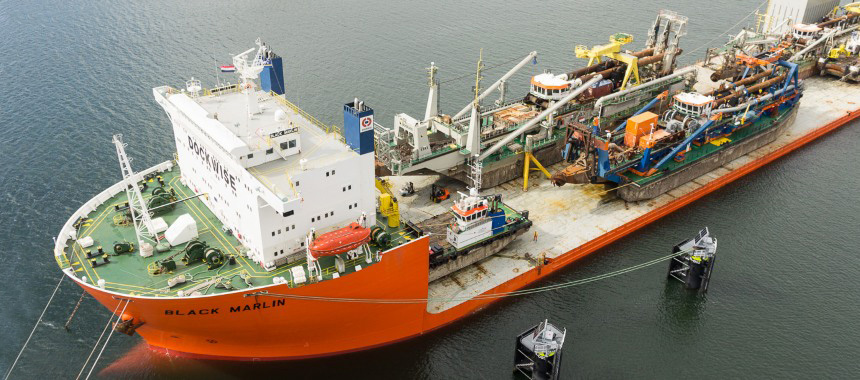 Transport vessel
Transport vessel
Semi-submersible transport vessel Mighty Servant-class
Equally, legendary transport vessels for transporting oversized cargoes are the ocean vessels of the «Mighty Servant» series. As you can see, they have also caught the attention of ubiquitous journalists while performing their challenging tasks.
Technical specifications of the semi-submersible transport vessel Mighty Servant 1:
- Deadweight tonnage — 45 407 tons
- Length — 190.9 m
- Width — 50 m
- Draft — 9.3 m
- Cargo deck size — 150 m to 50 m
- Maximum immersion depth — 12 m
- Speed — 14 knots
- Crew — 20 people
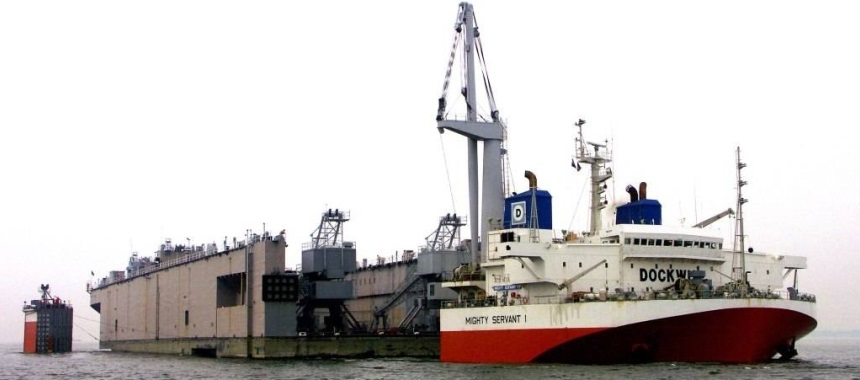
Transport vessels for yacht transportation Super Servant
Maritime company «Dockwise Shipping,» specializing in the delivery of various cargoes, has twenty-three semi-submersible vessels of different types. However, I would like to provide more details about the origin of one of them.
Once, due to a downturn in the oil industry, the number of orders for the transportation of oversized and large-scale cargoes significantly decreased. In response, the management of the shipping company decided to conduct a survey among its employees with one question — what could be done to generate revenue with their maritime vessels. Numerous suggestions were received, but the company's managers paid close attention to the most insightful ones. One of the proposals was the transportation of yachts, primarily from the Mediterranean Sea to various ports around the world.
Currently, the shipping company has four vessels at its disposal, exclusively retrofitted for the transportation of approximately 750 «luxury toys» per year. The cost of delivering a yacht from the United Kingdom to the Caribbean Sea is $7,500.
The thing is, yachts cannot cover long distances across the ocean due to several reasons. Firstly, wave heights can reach up to 12 meters. Secondly, yachts lack sufficient fuel reserves for extended voyages. Thirdly, the engines experience less wear and tear. Fourthly, independent voyages require adequate time, which is often unavailable. Therefore, utilizing the services of a semi-submersible vessel for yacht transportation is more cost-effective, safer, and faster. Among them, the largest is the transport vessel «Super Servant 4,» which had to be extended due to an increase in orders. The vessel is designed to provide an excellent experience for its clients.
Technical specifications of the transport vessels for yacht transportation Super Servant 4:
- Deadweight tonnage — 14 059 tons
- Length — 169.4 m
- Width — 32 m
- Draft — 5.38 m
- Cargo deck size — 116 m to 32 m
- Maximum immersion depth — 8.5 m
- Speed — 13 knots
- Crew — 25 people
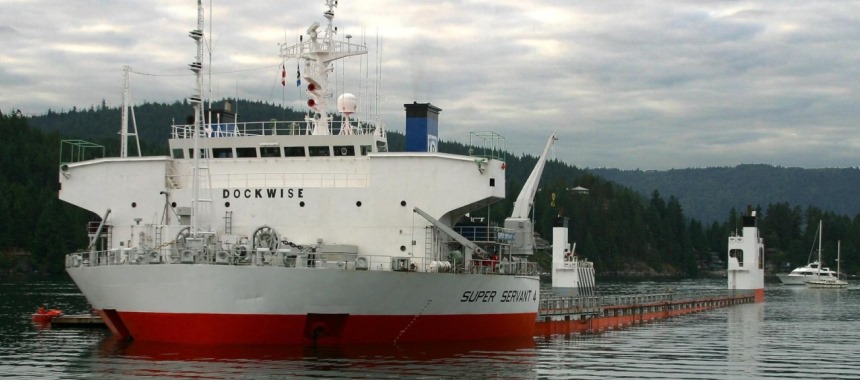 Semi-submersible transport vessels for yacht transportation
Semi-submersible transport vessels for yacht transportation
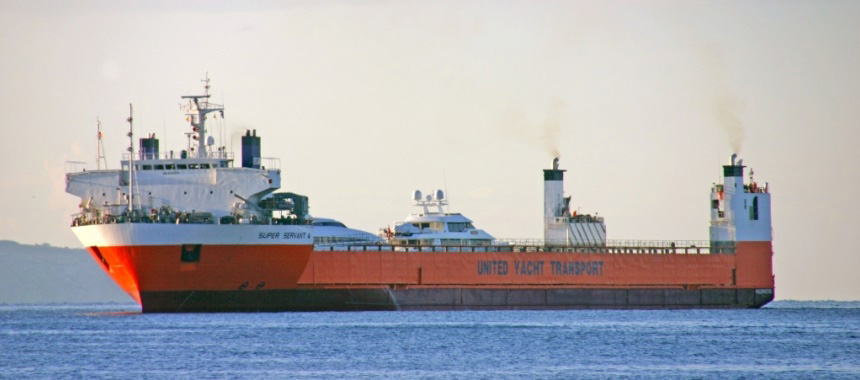 Transport vessels for yacht transportation Super Servant 4
Transport vessels for yacht transportation Super Servant 4
- Comments
 en
en ru
ru uk
uk




